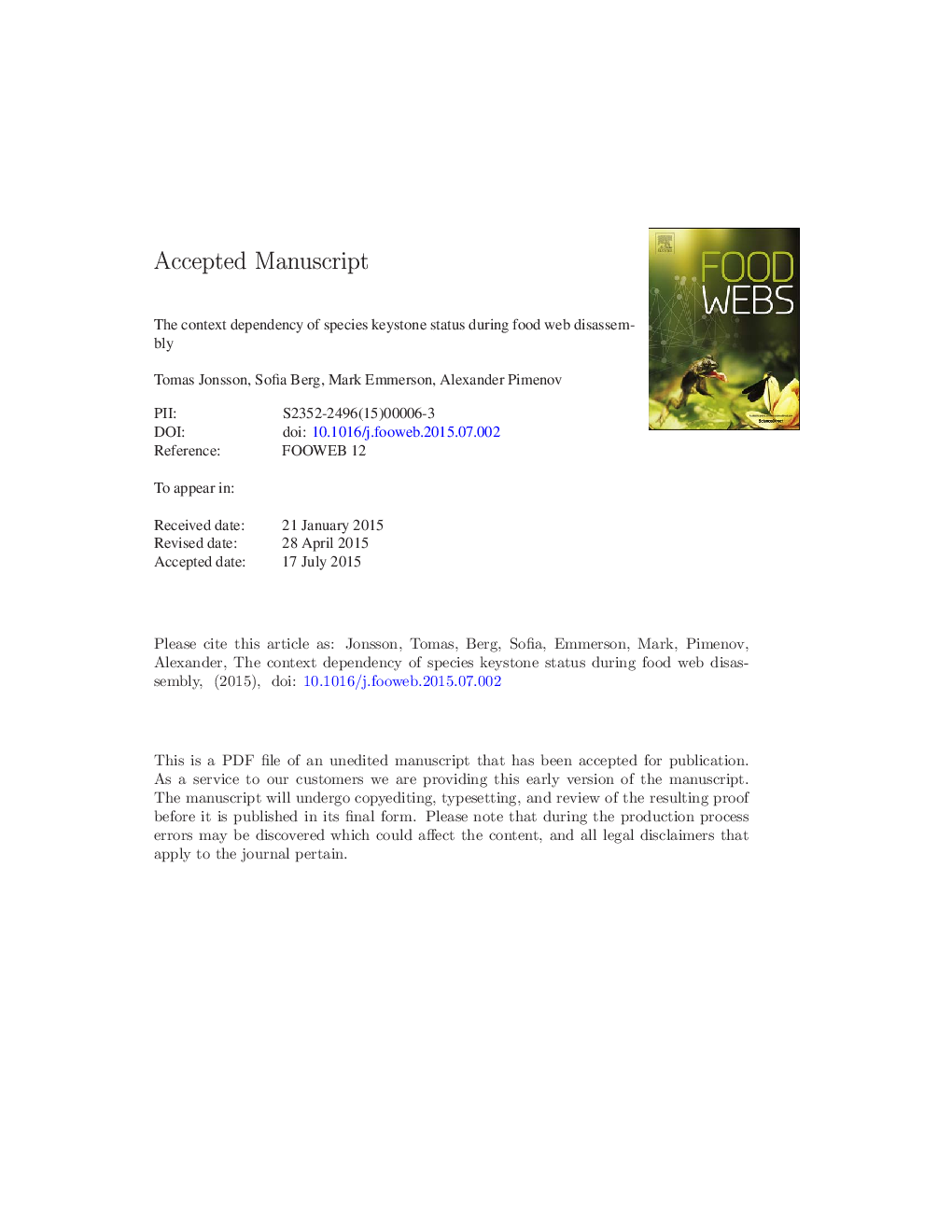| Article ID | Journal | Published Year | Pages | File Type |
|---|---|---|---|---|
| 6368728 | Food Webs | 2015 | 41 Pages |
Abstract
Global change continues to push individual species towards extinction and in many cases these species cannot be expected to disappear silently, without a trace, from the communities in which they reside. Importantly, the loss of certain species can trigger a cascade of secondary extinctions, resulting in further degradation of a system with potential effects on ecosystem functioning. It is thus crucial to better our understanding of the types of species which, if lost, will affect community structure the most, because in this context they are analogous to keystone species. Here, using a dynamical approach and simulating species loss in model communities, we study whether the importance of species changes as the structure of the food web changes by analyzing the potential importance of 11 species traits during food web collapse following simulated extinctions. We find that the keystone status of species traits is context dependent, with the identity of the most important trait changing during food web collapse. The relative importance of two trait categories tend to be inversely related, with body size based traits being important in intact to moderately degraded webs and interaction strength based species traits being important in highly collapsed food webs. The results of our study furthermore suggest that the response of communities to small and large perturbations may be related in the sense that the same kinds of species are important in both situations.
Related Topics
Life Sciences
Agricultural and Biological Sciences
Agricultural and Biological Sciences (General)
Authors
Tomas Jonsson, Sofia Berg, Mark Emmerson, Alexander Pimenov,
